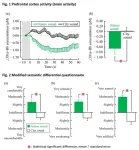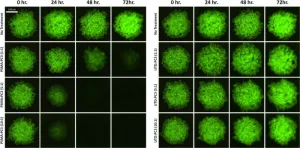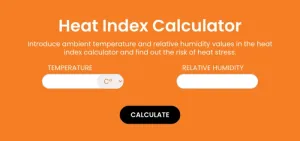(Press-News.org) In a response to the COVID-19 pandemic, a team of researchers has published an editorial calling for national governments to consider mandating real-time indoor air quality monitoring in at least all public buildings.
Their editorial is published in the journal Building Simulation on 25 April 2023.
The three-year-long COVID-19 pandemic, caused by the severe acute respiratory syndrome coronavirus 2 (SARS-CoV-2), has revealed that there is a global indoor-air crisis. Vaccination alone has not completely controlled the COVID-19 pandemic and the virus continues to threaten human health and life. Scientists now know most if not nearly all transmission occurs indoors in poorly ventilated spaces. The researchers note in their editorial that since more than 6.5 million people have been reported to die globally due to the SARS-CoV-2 infection and people continue to be infected, there is an urgent need to improve ventilation in buildings worldwide.
The researchers observe that while two years have passed since it was officially recognized that airborne transmission of SARS-CoV-2 spreads the virus and some efforts have been made, there have been no significant improvements in building ventilation. Some governments have taken steps toward addressing the issue. The U.S. government issued its “Clean Air in Buildings Challenge” in March 2022, and the Hong Kong SAR government set a policy that requires six air changes per hour in 20,000 dine-in restaurants in the city.
“In the absence of a worldwide effort to improve building ventilation, it is likely that poorly ventilated buildings will remain common, meaning that airborne transmission of SARS-CoV-2 will continue. Moreover, if another novel and highly contagious respiratory virus emerges in the future, another pandemic is likely to occur,” said Yuguo Li, a professor at The University of Hong Kong.
The researchers note that there are likely more than a billion indoor spaces in the world, and identifying those with poor ventilation remains a challenge. Understanding that SARS-CoV-2 is airborne is not enough—for effective improvement, technologies are needed to identify where ventilation is insufficient. They also note that any improvements in ventilation must also take into consideration the buildings’ energy efficiency. This is necessary because energy efficiency is needed to mitigate the effects of climate change.
The two key components of building energy performance are thermal performance and ventilation performance. Humans can detect thermal conditions by using a thermometer to measure the temperature. But even though humans can detect odors, they cannot sense or predict a building’s ventilation performance. So humans are not capable of detecting air pollutants, such as infection aerosols. This inability to detect most air pollutants contributes to the indoor air crisis, the researchers note.
The researchers suggest that without governments establishing mandatory requirements for building ventilation performance, building owners will unlikely choose to monitor their buildings’ ventilation performance. The researchers also note that monthly or annual data on building ventilation rates is not sufficient. Real-time hourly ventilation rates are needed to determine the ventilation performance of buildings. Taking into account the world’s current population of seven billion people, the researchers suggest there are likely more than one billion homes globally. Along with that number, there are hundreds of millions of other indoor spaces, such as office buildings and movie theaters. It is an unrealistic goal at present to attempt to conduct real-time hourly monitoring for all those indoor spaces.
Bringing the changes needed to improve building ventilation is highly challenging. If adequate ventilation data existed then a predictive tool could be used, at low cost, for many buildings. The Internet of Things technologies enable the collection of good quality real-time date in indoor spaces. Integrating predictive tools with Internet of Things, big data, and machine learning approaches would give scientists a way to assess the ventilation performance of buildings. “We remain optimistic that future innovation will result in advances in economic monitoring and predictive tools for determining ventilation performance in the billions of indoor spaces worldwide,” said Li.
The researchers who authored this editorial include Yuguo Li from the Department of Mechanical Engineering and the Faculty of Architecture, The University of Hong Kong; Pan Cheng, Ao Li, and Wei Jia from the Department of Mechanical Engineering, The University of Hong Kong; Li Liu from the School of Architecture, Tsinghua University; and Nan Zhang from the Beijing Key Laboratory of Green Built Environment and Energy Efficient Technology, Beijing University of Technology.
The editorial was supported by an RGC collaborative research grant.
END
Researchers call for national governments to mandate real-time indoor air quality monitoring
Better ventilated indoor spaces protect against COVID-19 spread
2023-04-27
ELSE PRESS RELEASES FROM THIS DATE:
Routine antibiotics don't improve outcomes of post-mastectomy breast reconstruction
2023-04-27
April 27, 2023 – For breast cancer patients undergoing breast reconstruction after mastectomy, avoiding postoperative oral antibiotics does not reduce the risk of infections, reports a study in the May issue of Plastic and Reconstructive Surgery®, the official medical journal of the American Society of Plastic Surgeons (ASPS). The journal is published in the Lippincott portfolio by Wolters Kluwer.
"Our experience suggests that discontinuing routine oral antibiotic treatment after implant-based breast reconstruction ...
MD Anderson and Generate:Biomedicines enter co-development and commercialization agreement to accelerate novel protein therapeutics for oncology using generative AI
2023-04-27
HOUSTON and SOMERVILLE, Mass. ― The University of Texas MD Anderson Cancer Center and Generate:Biomedicines today announced a strategic collaboration to jointly discover and co-develop protein therapeutics for up to five oncology targets in advanced cancers, including small-cell and non-small-cell lung cancer.
Under the co-development and commercialization agreement, MD Anderson and Generate:Biomedicines will each contribute toward creating optimized, potentially best-in-class therapeutics that can rapidly advance into proof-of-concept clinical trials. The agreement combines Generate:Biomedicines’ integrated machine-learning capabilities and experimental/wet lab capabilities – ...
Sounds from nature: A soothing remedy for gambling addiction
2023-04-27
Gambling addiction, also called “pathological gambling” and “gambling disorder (GD),” is known to have severe economic, social, mental, and physical consequences on those affected. One of the major factors contributing to the development and relapse of this disorder is stress. However, studies show that replacing gambling with alternative leisure activities may reduce the likelihood of developing the disorder. In recent years, forest bathing, or “shinrin-yoku,” a form of nature therapy, has emerged ...
Estimating the impact of new high seas activities on the environment: The effects of ocean-surface macroplastic removal on sea surface ecosystems
2023-04-27
“The surface is the skin through which our ocean breathes. It is a critical nursery ground for hundreds, possibly thousands, of species, and it is also one of the most vulnerable regions to human impacts. This is why we must treat the surface with exceptional care. It is an extremely unique and fragile environment, and small impacts at the surface could ripple into large impacts above and below the waves.” - Dr. Rebecca Helm, Assistant Professor of Environmental Science at Georgetown University
New research ...
AI in the ICU
2023-04-27
Clinicians in an intensive care unit need to make complex decisions quickly and precisely, monitoring critically ill or unstable patients around the clock.
Researchers from Carnegie Mellon University's Human-Computer Interaction Institute (HCII) collaborated with physicians and researchers from the University of Pittsburgh and UPMC to determine if artificial intelligence could help in this decision-making process and if clinicians would even trust such assistance.
The team gave 24 ICU physicians access to an AI-based ...
Record ammonia production achieved with inexpensive cobalt catalyst at low temperatures
2023-04-27
Ammonia (NH3) is one of the most widely produced chemicals in the world, with a production of over 187 million tons in 2020. About 85% of it is used to produce nitrogenous fertilizers, while the rest is used for refining petroleum, manufacturing a wide range of other chemicals, and creating synthetic fibers such as nylon. However, all this comes at a high energy cost. Currently, most of the ammonia is produced using the conventional Haber-Bosch process, which requires combining nitrogen and hydrogen at high temperatures (400-450°C) and pressures (200 atmospheres). As a result, scientists ...
Analyzing CAR-T cells with image cytometry for potential solid tumor treatments
2023-04-27
Oak Brook, IL – The April 2023 issue of SLAS Discovery contains six full-length articles and one mini-review covering high-throughput screening (HTS) for protease-inhibiting drugs, high-content phenotypic screening and other life sciences research.
Featured in this month’s issue is the article “High-Throughput Method to Analyze the Cytotoxicity of CAR-T Cells in a 3D Tumor Spheroid Model Using Image Cytometry,” by Zurowski, et al, where the authors focus on the use of chimeric ...
10 popular diets scored for heart-healthy elements; some need improvement
2023-04-27
Statement Highlights:
A new American Heart Association scientific statement assesses and scores the heart healthiness of popular dietary patterns.
Several dietary patterns, including the DASH-style eating plan, Mediterranean, pescatarian and vegetarian eating patterns, received top ratings for aligning with the Association’s dietary guidance.
A few eating patterns, including Paleo and ketogenic diets, contradict the Association’s guidance and did not rank as heart-healthy eating patterns.
The statement suggests opportunities for dietary research and interventions to promote health equity, recognizing the importance of social determinants of health in shaping dietary ...
Twilight zone at risk from climate change
2023-04-27
Life in the ocean’s “twilight zone” could decline dramatically due to climate change, new research suggests.
The twilight zone (200m to 1,000m deep) gets very little light but is home to a wide variety of organisms and billions of tonnes of organic matter.
The new study warns that climate change could cause a 20-40% reduction in twilight zone life by the end of the century.
And in a high-emissions future, life in the twilight zone could be severely depleted within 150 years, with no recovery for ...
Researchers from ISGlobal and LSHTM call for incorporating heat stress indices into communication of dangerous heat waves
2023-04-27
In the summer of 2022, over 20,000 excess deaths across Spain, France, Germany and Great Britain were suggested to have been linked to extremely hot weather. In the context of global warming where climate models point to the fact that extreme heat waves are likely to increase both in frequency and magnitude, preventive measures and adequate communication of dangerous conditions take on special relevance. In a Brief Communication published in npj Climate and Atmospheric Science, researchers from the Barcelona Institute for Global Health (ISGlobal), a centre supported ...
LAST 30 PRESS RELEASES:
Injectable breast ‘implant’ offers alternative to traditional surgeries
Neuroscientists devise formulas to measure multilingualism
New prostate cancer trial seeks to reduce toxicity without sacrificing efficacy
Geometry shapes life
A CRISPR screen reveals many previously unrecognized genes required for brain development and a new neurodevelopmental disorder
Hot flush treatment has anti-breast cancer activity, study finds
Securing AI systems against growing cybersecurity threats
Longest observation of an active solar region
Why nail-biting, procrastination and other self-sabotaging behaviors are rooted in survival instincts
Regional variations in mechanical properties of porcine leptomeninges
Artificial empathy in therapy and healthcare: advancements in interpersonal interaction technologies
Why some brains switch gears more efficiently than others
UVA’s Jundong Li wins ICDM’S 2025 Tao Li Award for data mining, machine learning
UVA’s low-power, high-performance computer power player Mircea Stan earns National Academy of Inventors fellowship
Not playing by the rules: USU researcher explores filamentous algae dynamics in rivers
Do our body clocks influence our risk of dementia?
Anthropologists offer new evidence of bipedalism in long-debated fossil discovery
Safer receipt paper from wood
Dosage-sensitive genes suggest no whole-genome duplications in ancestral angiosperm
First ancient human herpesvirus genomes document their deep history with humans
Why Some Bacteria Survive Antibiotics and How to Stop Them - New study reveals that bacteria can survive antibiotic treatment through two fundamentally different “shutdown modes”
UCLA study links scar healing to dangerous placenta condition
CHANGE-seq-BE finds off-target changes in the genome from base editors
The Journal of Nuclear Medicine Ahead-of-Print Tip Sheet: January 2, 2026
Delayed or absent first dose of measles, mumps, and rubella vaccination
Trends in US preterm birth rates by household income and race and ethnicity
Study identifies potential biomarker linked to progression and brain inflammation in multiple sclerosis
Many mothers in Norway do not show up for postnatal check-ups
Researchers want to find out why quick clay is so unstable
Superradiant spins show teamwork at the quantum scale
[Press-News.org] Researchers call for national governments to mandate real-time indoor air quality monitoringBetter ventilated indoor spaces protect against COVID-19 spread




